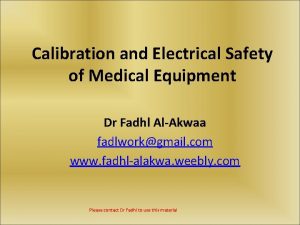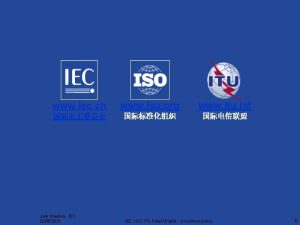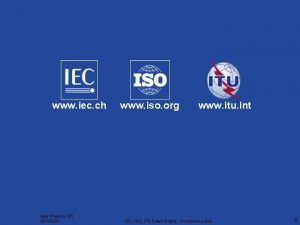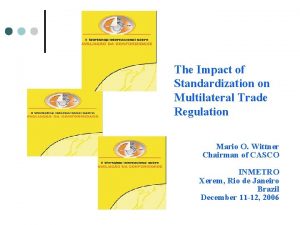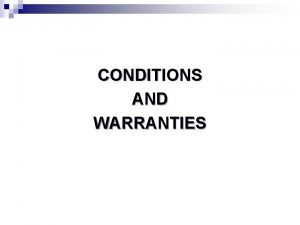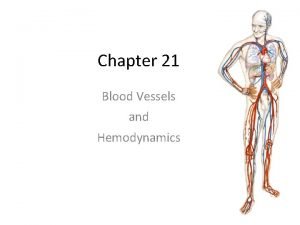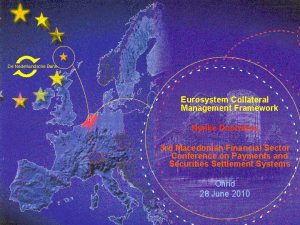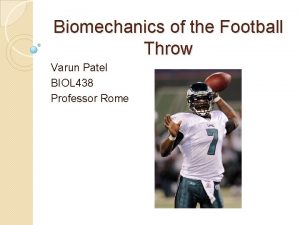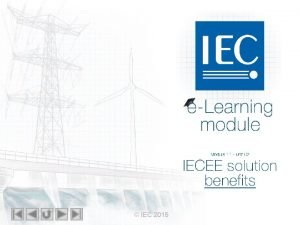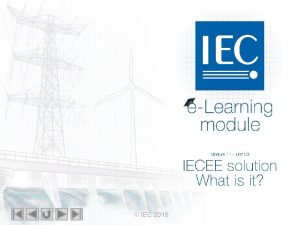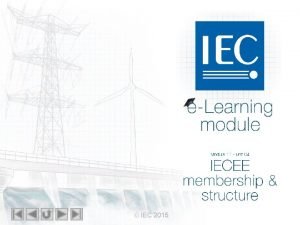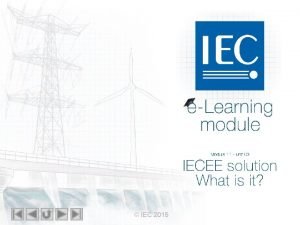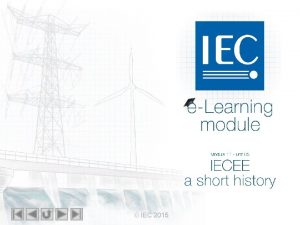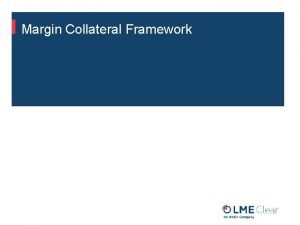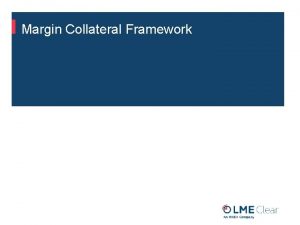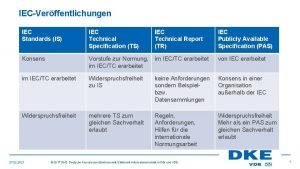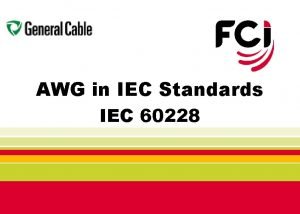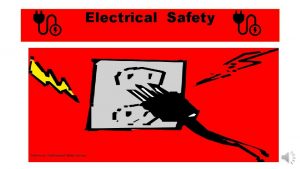Electrical Safety Standards IEC 60601 and collateral standards





















- Slides: 21

Electrical Safety Standards • IEC 60601 and collateral standards 17. 5. 6 Identify electrical safety standards and explain their purpose in medical equipment management. Unit C 17. 5 Adhering to Medical Equipment Standards Module 279 -17 -C Regulations, Standards and Ethics © dr. Chris R. Mol, BME, NORTEC, 2015

IEC: Standards of Electrical Technologies The International Electrotechnical Commission is a nonprofit, non-governmental, international standards organization that prepares and publishes International Standards for all electrical, electronic and related technologies – collectively known as "electrotechnology". IEC standards cover a vast range of technologies from power generation, transmission and distribution to home appliances and office equipment, semiconductors, fibre optics, batteries, solar energy, nanotechnology, etc. It also includes Medical Technology! © dr. Chris R. Mol, BME, NORTEC, 2015 Electrical Safety Standards

IEC: Standards of Electrical Technologies (continued) Currently, 82 countries are members of IEC while another 82 participate in the Affiliate Country Programme (out of 196 countries in the world today). Its headquarters are in Geneva. It has regional centres in Asia-Pacific (Singapore), Latin America (São Paulo, Brazil) and North America (Boston, United States). Today, the IEC is the world's leading international organization in its field, and its standards are adopted as national standards by its members. The work is done by some 10, 000 electrical and electronics experts from industry, government, academia, test labs and others with an interest in the subject. IEC standards are also being adopted as harmonized standards by other certifying bodies such as BSI (United Kingdom), UL & ANSI/INCITS (United States), SABS (South Africa), etc. IEC standards harmonized by other certifying bodies generally have some noted differences from the original IEC standard. © dr. Chris R. Mol, BME, NORTEC, 2015 Electrical Safety Standards

IEC 60601: standard for medical electrical equipment IEC 60601 is a widely accepted benchmark for medical electrical equipment and compliance with IEC 60601 -1 has become a requirement for the commercialisation of electrical medical equipment in many countries. First published in 1977 and regularly updated and restructured it consists of: • a General Standard, • about 10 Collateral Standards, • about 60 Particular Standards. © dr. Chris R. Mol, BME, NORTEC, 2015 Electrical Safety Standards

IEC 60601: General Standard Safety, The IEC 60601 -1 Standard, Medical Electrical Equipment—Part 1: General Requirements for is the cornerstone document addressing many of the risks associated with electrical medical equipment. IEC 60601 is applicable to virtually all medical equipment, including battery-operated thermometers, MRI and gamma imaging systems, endoscopic cameras, infusion pumps, and many others. © dr. Chris R. Mol, BME, NORTEC, 2015 Electrical Safety Standards

IEC 60601: Collateral Standards Collateral standards (numbered 60601 -1 -X) define the requirements for certain aspects of safety and performance, e. g. • Electromagnetic Compatibility (IEC 60601 -1 -2) or • Protection for diagnostic use of X-rays (IEC 60601 -1 -3). • Human factors (usability) issues (IEC 60601 -1 -6) An example of a relatively new collateral standard is IEC 60601 -1 -9 for Environmentally Conscious Design of Medical Electrical Equipment published July 2007. easy to use means: less user error … The Part 9 standard asks manufacturers of medical devices to consider the environmental impacts of their devices throughout the product's entire life cycle and to minimize these where possible. This standard also requires that the manufacturer provide information to the user on how to use the product in the most environmentally sensitive way. © dr. Chris R. Mol, BME, NORTEC, 2015 Electrical Safety Standards

IEC 60601: Particular Standards Particular standards (numbered 60601 -2 -X) define the requirements for specific products or specific measurements built into products, e. g. • MR scanners (IEC 60601 -2 -33) or • Electroencephalograms (IEC 60601 -2 -26) • High-frequency surgical devices (IEC 60601 -2 -2) Particular standards can amend, modify, and/or supersede part of the requirements specified in IEC 60601 -1. NB. Compliance with IEC 60601 -1 is not the same as medical device approval…. (see Regulations) © dr. Chris R. Mol, BME, NORTEC, 2015 Electrical Safety Standards

IEC 60601: General, Collateral and Particular standards © dr. Chris R. Mol, BME, NORTEC, 2015 Electrical Safety Standards

IEC 60601 -1: Standards per Hazard The structure of the General IEC 60601 -1 standard is hazard-specific. It provides requirements for evaluating the common hazards associated with electromedical products. Its scope is to protect both patients and users by reducing the likelihood of the following hazards: Electrical Shock Hazards. Reduce exposure (access to the user or the patient) to voltages exceeding 25 Vac or 60 Vdc, energy hazards, and/or excessive allowable leakage currents. Provide for separation of circuits, proper grounding, and meeting the appropriate dielectric tests. Mechanical Hazards. Reduce exposure to moving parts, pinching, crushing, over-tilt, expelled parts, dropping, supports breaking, and others. © dr. Chris R. Mol, BME, NORTEC, 2015 Electrical Safety Standards

IEC 60601 -1: Standards per Hazard: more hazards Radiation Hazards. Reduce the risk of x-radiation exceeding 0. 5 mrad in a onehour period at a distance of 5 cm from accessible surfaces outside the treatment zone. Fire and Other Hazards. Reduce the exposure to excessive temperatures, liquid spillage, pressure vessels, human errors, and other such hazards. Excessive (Energy) Output Hazard. Reduce exposure caused by inaccuracy of operating data or the accidental high setting of output. in the rest of this lecture, we will only deal with the electrical safety standards © dr. Chris R. Mol, BME, NORTEC, 2015 Electrical Safety Standards

Electrical shock Hazard: Physiological Effects of Electricity hazard: unintended electric current passing through a human body from hand to foot inability to let go Electrical Safety is not dependent on voltage but on (leakage) currents direct through the heart 0. 5 m. A: startle reaction threshold Typical Body Impedance: 1, 000 Ohms (dry, hand to hand) © dr. Chris R. Mol, BME, NORTEC, 2015 Electrical Safety Standards

IEC 60601: Product Classes I and II For Electrical Shock Hazard, IEC 60601 -1 specifies requirements based on the product classification, which is dependent on criteria in terms of safety and intended use. For devices powered by an external source, the product may be classified as Class I or II. • Class I is a product that is provided with a reliable Protective Earth (PE) such as a complete metal enclosure, that is tied to the ground pin of the three-pronged power plug. It has an insulation between ‘live’ parts and the metal enclosure. In the event of a fault, which would otherwise cause an exposed conductive part to become live, the protective earth comes into effect. • Class II is a product without a Protective Earth and where double or reinforced insulation is relied upon to provide protection against electric shock. © dr. Chris R. Mol, BME, NORTEC, 2015 Electrical Safety Standards

IEC 60601: Applied Parts IEC 60601 -1 uses the term applied part to refer to the part of the medical device which comes into physical contact with the patient in order for the device to carry out its intended function. Applied parts are classified as Type B, Type BF or Type CF according to the nature of the device and the type of contact. Each classification has different requirements from the point of view of protection against electrical shock. Type CF is the most stringent classification, being required for those applications where the applied part is in direct conductive contact with the heart or other applications as considered necessary. Type BF is less stringent than CF, and is generally for devices that have conductive contact with the patient, or having medium or long term contact with the patient. Type B is the least stringent classification, and is used for applied parts that are generally not conductive and can be immediately released from the patient. Type B applied parts may be connected to earth, while Type BF and CF are 'floating' and must be separated from earth. The classification of specific devices can be found in the particular standards, IEC 60601 -2 -XX © dr. Chris R. Mol, BME, NORTEC, 2015 Electrical Safety Standards

IEC 60601: Single faults should not cause hazard A basic principle behind the philosophy of electrical safety is that in the event of a single ‘fault’ of ‘failure’ (e. g. a disconnected wire, or the interruption of the ground conductor) no safety hazard should arise. In order for a device to be electrically ‘safe’, protective measures must be installed so that fault currents and leakage currents cannot become higher than levels that are tolerable even for seriously debilitated patients, who might be unconscious or unable to move. This applies both in standard operational conditions (normal conditions) and in case of a ‘single failure’ The standard lays down a maximum current a patient can be exposed to and demands two protective measures to ensure this specified patient protection. © dr. Chris R. Mol, BME, NORTEC, 2015 Electrical Safety Standards

IEC 60601: The following Tests are specified for Class 1: is the metal enclosure well connected to Protective Earth (is the resistance low enough) ? © for Class 1: is the insulation between power and earth high enough ? dr. Chris R. Mol, BME, NORTEC, 2015 for Class 2: is the insulation between power and enclosure high enough ? Electrical Safety Standards

IEC 60601: The following Tests are specified for Class I: is the electrical current leaking to earth low enough ? © for Class I and II: is the electrical current leaking from the enclosure low enough ? dr. Chris R. Mol, BME, NORTEC, 2015 for B and BF equipment: is the electrical current leaking from the patient to earth low enough? Electrical Safety Standards

IEC 60601: Single faults should not cause hazard Is the electrical current leaking from the patient to the ‘hot’ power line in the equipment low enough? © Is the electrical current leaking from the patient to the mains low enough? dr. Chris R. Mol, BME, NORTEC, 2015 Electrical Safety Standards

Test Standards: specified limits © dr. Chris R. Mol, BME, NORTEC, 2015 Electrical Safety Standards

Safety Testers These Electrical safety tests can most easily be executed with an electrical safety tester. These are designed to test against the IEC standard. A number of these tests can also be carried out with a simple multi-meter. However, for 50 M. Ohm insulation tests a special meter, a ‘Megger’ is required. Ensuring design that a device complies with IEC 60601 can be a complex task…. © dr. Chris R. Mol, BME, NORTEC, 2015 Electrical Safety Standards

IEC 60601: standard for medical electrical equipment IEC 60601 -1 has been adopted (with a local name) as national standard in most major countries. © dr. Chris R. Mol, BME, NORTEC, 2015 Electrical Safety Standards

for more details see e. g. : http: //www. slideshare. net/ishoney/medical-electrical-safety END The creation of this presentation was supported by a grant from THET: see https: //www. thet. org/
 Chassis leakage current
Chassis leakage current 60601 and 61010
60601 and 61010 Www.iec.ch
Www.iec.ch Iec
Iec European collateral management system
European collateral management system Iec standards
Iec standards Shawn paulsen
Shawn paulsen Interventricular foramen
Interventricular foramen Micah
Micah Collateral estoppel definition
Collateral estoppel definition Condition is a stipulation which is
Condition is a stipulation which is Collateral circulation vs anastomosis
Collateral circulation vs anastomosis Collateral estoppel definition
Collateral estoppel definition Profunda brachii artery
Profunda brachii artery Clavipectoral fascia
Clavipectoral fascia What is triparty collateral management
What is triparty collateral management E4 evaluation examples
E4 evaluation examples Character capacity collateral
Character capacity collateral Collateral management framework
Collateral management framework European collateral management system
European collateral management system Sample of collateral reading
Sample of collateral reading Biomechanics throwing football
Biomechanics throwing football
